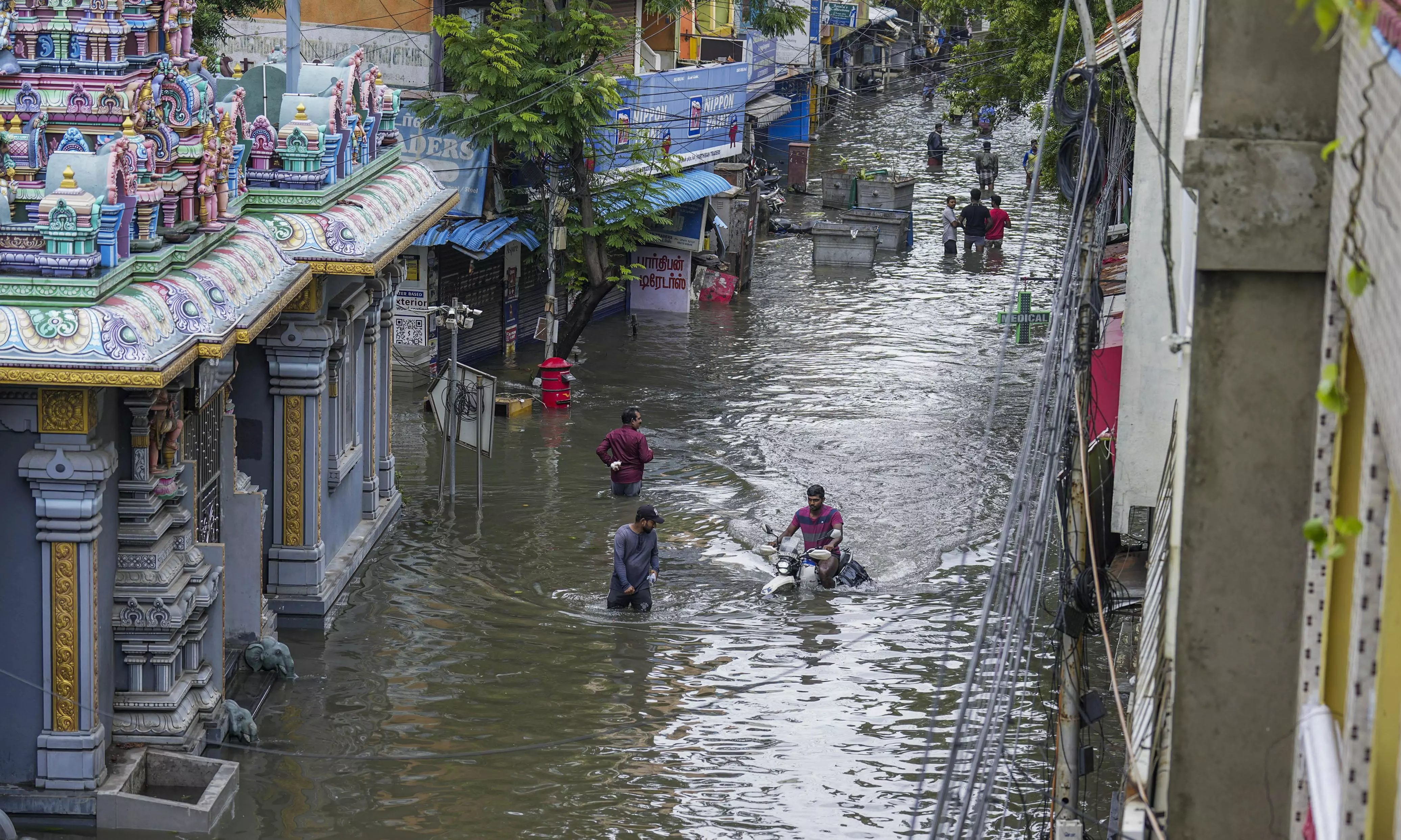
What made Michaung so deadly? Fingers point at El Nino, climate change
While formation of tropical storm in Bay of Bengal during December is routine, intensity of rains associated with recent cyclone not normal: Climate Trends

Severe cyclonic storm Michaung crossed south Andhra Pradesh coast close to Bapatla district between 12.30 pm and 2.30 pm on Tuesday. Andhra Pradesh and Tamil Nadu may have heaved a collective sigh of relief, but the cyclone, and the absolute havoc it wreaked on Chennai and other cities, begs the question — why are November-December cyclones in the East Coast so virulent in recent years?
“Michaung is the sixth storm of this year in the Indian seas,” pointed out Climate Trends, a research-based consulting and capacity building initiative operating out of New Delhi. “December is the peak month of the post-monsoon cyclone season, where most of the cyclonic storms usually head towards Tamil Nadu and south Andhra Pradesh. While the formation of a tropical storm in the Bay of Bengal during December is very timely, the intensity of rains associated with the cyclone Michaung is not normal.”
Over the past two days, torrential and incessant rains have triggered flash flooding in Chennai, claiming at least five lives and inundating entire neighbourhoods. Several parts of the city are still hip- or knee-high in water, and without electricity.
Sea surface temperature and rainfall
According to Climate Trends, the frequency and intensity of cyclones have increased manifold due to global warming. Around 93 per cent of the heat is being absorbed by the oceans, and warm waters act as an energy source for cyclones. “Scientists note that the intensity of the cyclone depends not only on sea surface temperature but, more importantly, on the volume of warm water in the ocean,” it said.
Citing a report, Climate Trends said: “The increase in sea surface temperature (SST) could result in peak heavy rainfall (>65 mm day−1) in the tropical cyclone inner-core region, especially the rear sector. Heavy rainfall areas extend to greater distances (>300 km) around the tropical cyclone centre with SST warming. The observed changes of tangential wind speed due to large sea surface enthalpy fluxes (rate of flow of heat energy) associated with ocean warming result in tropical cyclone size changes and then guide the cyclone to north-eastward movement.”
Such conditions were seen in Chennai, with the city witnessing incessant rains on December 3-4 as the dense cloud bands of Cyclone Michaung hovered over it.
‘Terror’ trio of El Nino, IOD, MJO
El Nino is the above-average SST that periodically develops across east-central equatorial Pacific. It represents the warm phase of the El Nino-Southern Oscillation (ENSO) cycle. The other phase, La Nina, represents the periodic cooling of SST across the same region.
Thanks to El Nino, temperatures are said to be rising worldwide. According to Climate Trends, Nino 3.4, the representative of ONI (Oceanic Nino Index), has crossed 2°C for the first time since February 2016, after the super El Nino of 2015. Chennai had recorded 292 mm of rain on December 2, 2015, which was an all-time high record.
El Nino is characterised by a positive ONI greater than or equal to +0.5ºC. However, these ONI thresholds must be exceeded for at least five consecutive overlapping three-month seasons.
“El Ninos usually peak around Christmas in December, a reason why they derive their name from the Spanish term for ‘little boy’,” said Dr Roxy Mathew Koll, Climate Scientist at the Indian Institute of Tropical Meteorology, as quoted by Climate Trends. “As oceans absorb more than 93% of the additional heat from global warming, El Ninos are also getting stronger. They are not little boys anymore but monsters of the sea.”
“Changes in ocean-cyclone interactions have emerged in recent decades in response to Indian Ocean warming and are to be closely monitored with improved observations since future climate projections demonstrate continued warming of the Indian Ocean at a rapid pace along with an increase in the intensity of cyclones in this basin,” Dr Koll added.
Meanwhile, other two important oceanic phenomena, the Indian Ocean Dipole (IOD) and Madden-Julian Oscillation (MJO), both associated with positive rainfall over Indian landmass, were in favourable zones, said Climate Trends. “These, along with anomalous high sea surface temperatures, provided conducive dynamic and thermodynamic conditions for the genesis,” it added.
Global warming and cyclone dynamics
Recent observations are seen to indicate that cyclones in the north Indian Ocean are now showing rapid intensification. They are intensifying by more than 50 knots in just 24 hours in response to SSTs much higher than 30°C, prominently due to the rapid warming in the region. From 2000 onwards, the frequency of cyclones undergoing rapid intensification in the north Indian Ocean has increased, said Climate Trends.
Besides the SST, the ocean heat content also regulates the tropical cyclones’ (TC) intensity, particularly for slowly-moving TCs. The intensity of cyclones in the north Indian Ocean is governed not only by the SSTs but also by the high ocean heat content and warm ocean subsurface. High ocean heat content implies a warmer upper ocean, which helps cyclones sustain or intensify due to the uninterrupted supply of sensible and latent heat fluxes from the ocean surface to the atmosphere.
Further, rapid global temperature increase has made cyclone forecasting further challenging. This means the ability of authorities to assess cyclone impact and management and to develop a cyclone-resilient society becomes all the more difficult.

